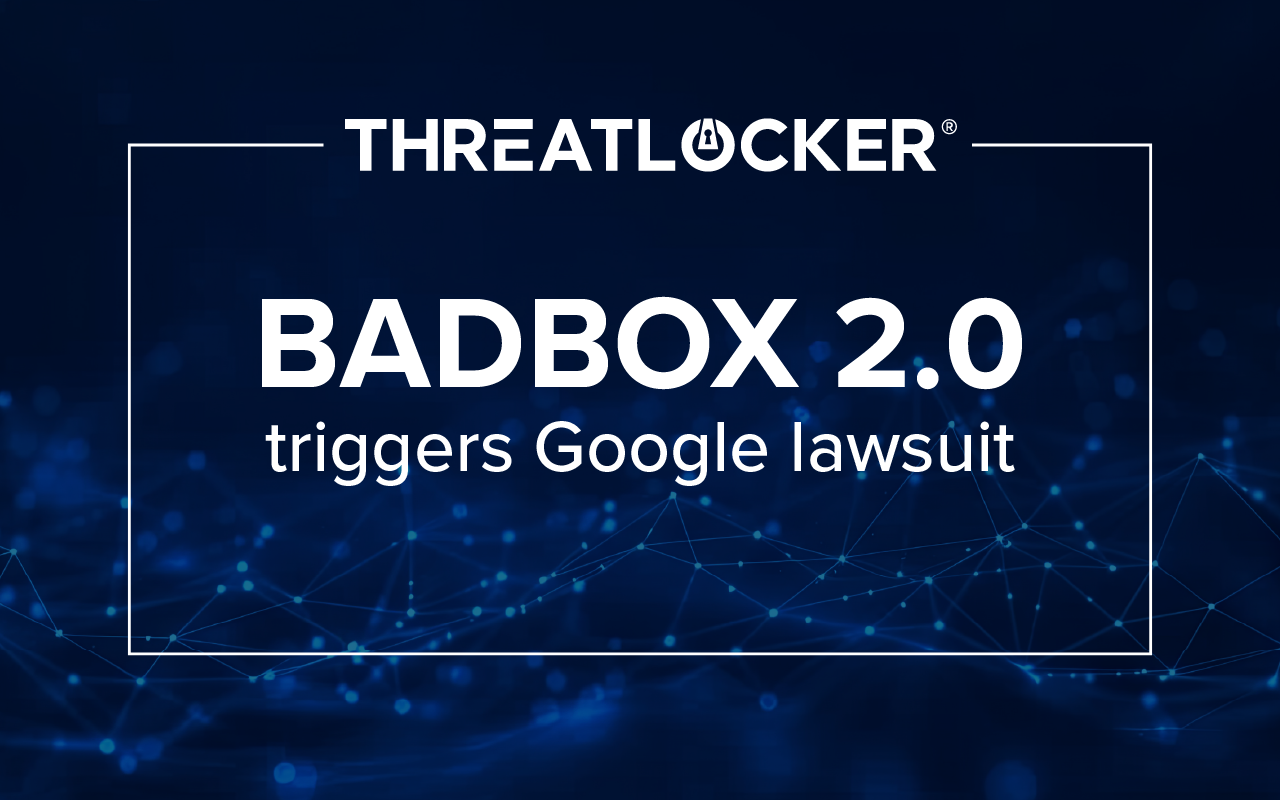Google Sues 25 Chinese Entities Over BADBOX 2.0 Botnet Attack
Legal Action Against BadBox 2.0 Botnet
Google has initiated legal action in New York federal court against 25 unnamed individuals or entities in China for their alleged involvement with the BadBox 2.0 botnet, which has compromised over 10 million devices running Android's open-source software. The botnet operates by exploiting devices that lack Google’s security protections, resulting in large-scale ad fraud and other cybercrimes. This includes the use of pre-installed malware that enables cybercriminals to conduct illicit activities.

Image courtesy of ThreatLocker
Google's Ad Traffic Quality team swiftly updated Google Play Protect to block apps associated with BadBox. Additionally, the FBI has issued an alert regarding these cyber threats, emphasizing the need for enhanced consumer protection measures. HUMAN Security partnered with Google to unveil the scale of this operation.
Scope and Impact of the Botnet
BadBox 2.0 is described as the largest known botnet targeting connected consumer devices, including smart TVs, projectors, and other IoT devices. These devices are often shipped without adequate security measures, making them susceptible to malware. Google aims to disrupt the botnet's infrastructure through its lawsuit, seeking to sinkhole domains used for control and mitigate further abuse.
The botnet has reportedly generated millions in illegitimate ad revenue and utilized compromised devices to harvest sensitive user data. The FBI has warned that many of the affected products are either preloaded with malicious software or infected shortly after being set up, allowing for unauthorized access and exploitation.
Criminal Structure Behind BadBox
The legal filings detail a sophisticated criminal structure overseeing the BadBox operation, consisting of distinct groups responsible for various aspects, such as command servers and malware distribution. The operation exploits vulnerabilities in the supply chain, allowing malware to be installed prior to consumer purchase.
Google's lawsuit alleges that these actors profit from ad fraud by deploying "evil twin" versions of legitimate applications, creating fraudulent ad impressions, and leveraging infected devices for click fraud. This structured approach significantly amplifies the botnet's reach and impact.
Protecting Against Cyber Threats
In response to the growing threat posed by BadBox 2.0, organizations need to implement robust security measures. Solutions like Gopher Security's AI-Powered Zero Trust Platform offer comprehensive protection across devices, apps, and environments. This includes advanced capabilities such as micro-segmentation for secure environments and granular access control.
Security experts recommend that businesses deploy network defenses, such as firewalls, to protect against compromised devices. Regular security audits and updates are essential to mitigate risks. Gopher Security specializes in cutting-edge cybersecurity architectures, ensuring that organizations can effectively manage and respond to evolving threats.
For more information on how to enhance your security posture against sophisticated cyber threats, visit Gopher Security and explore our range of AI-driven security solutions.

